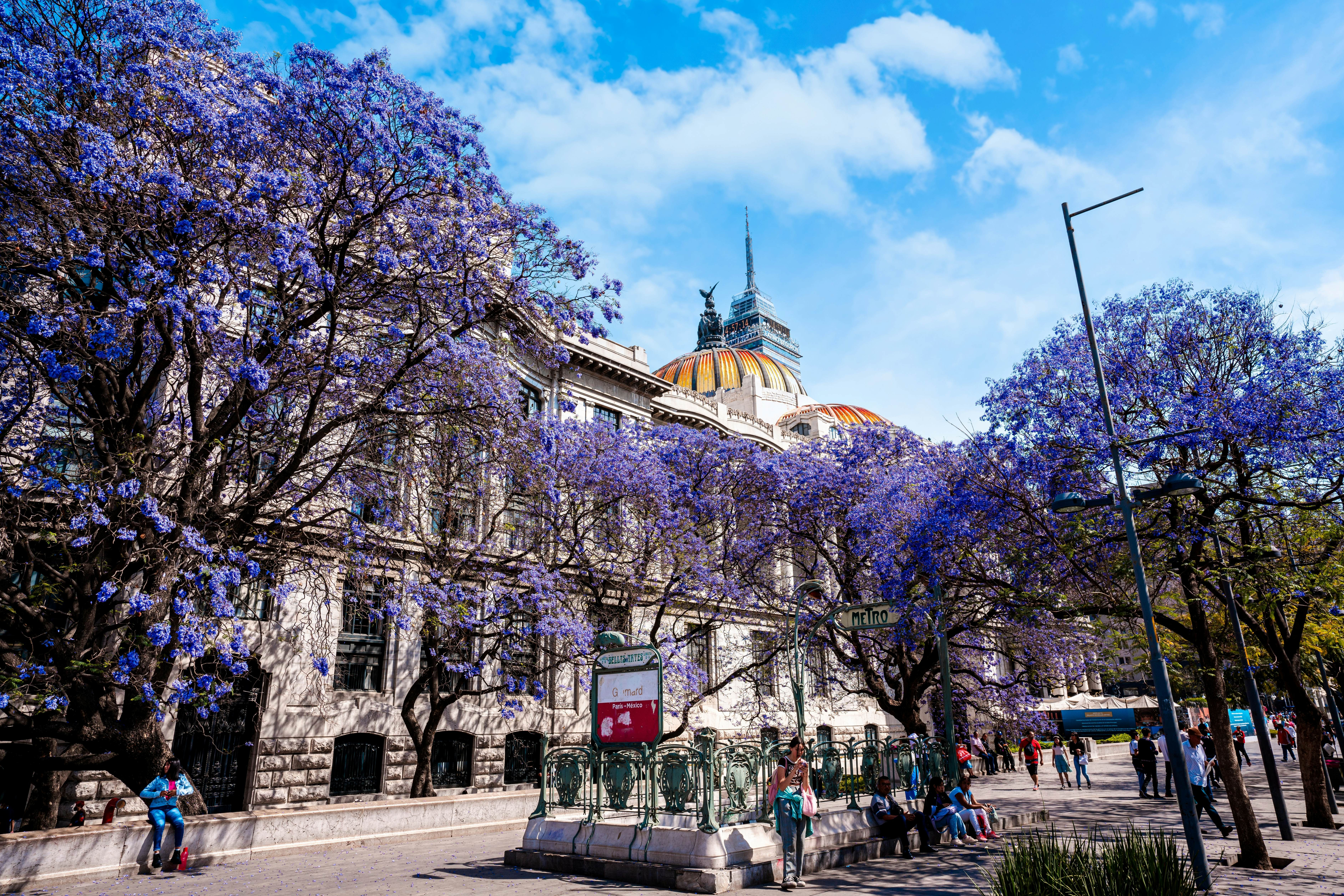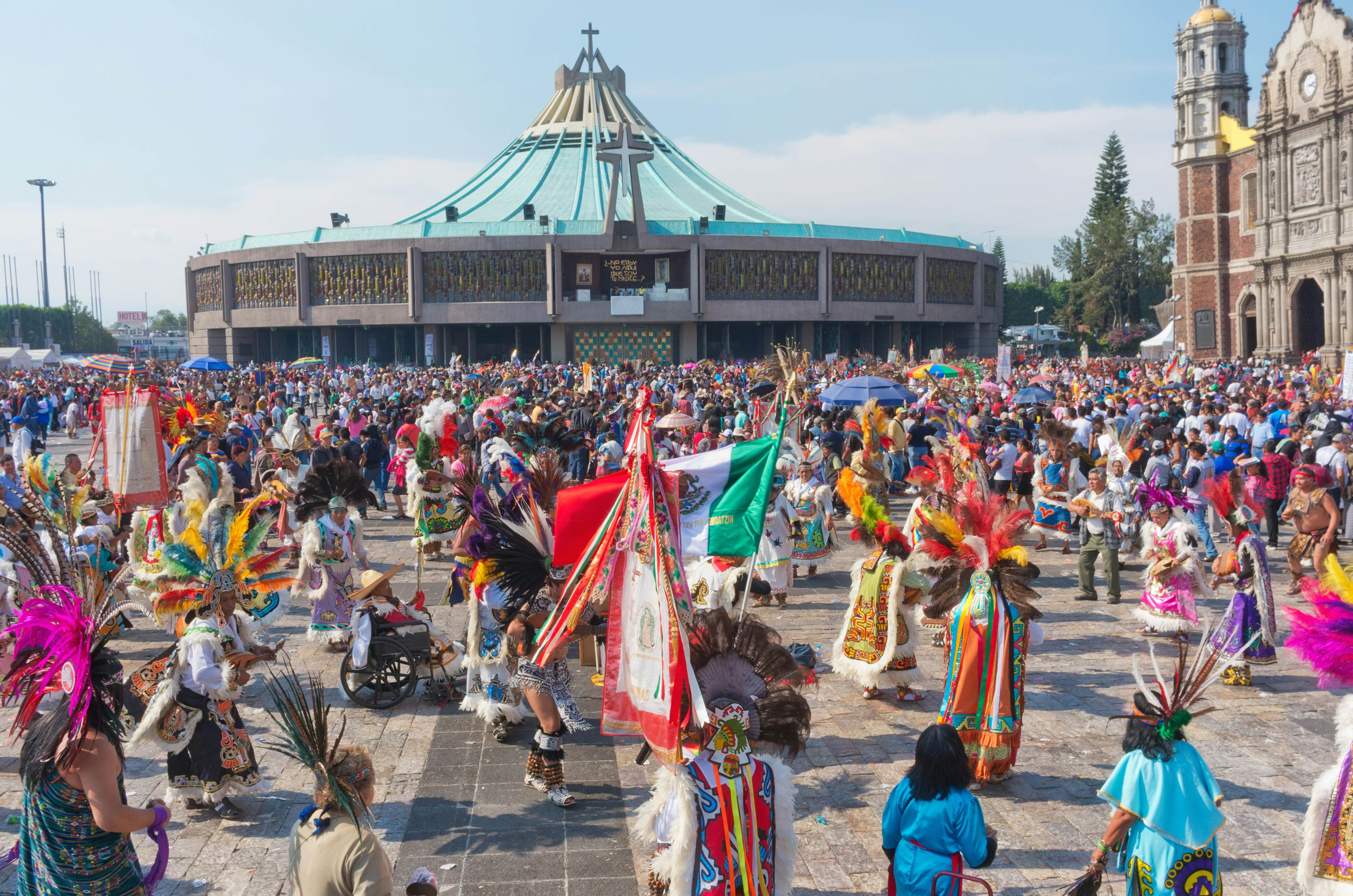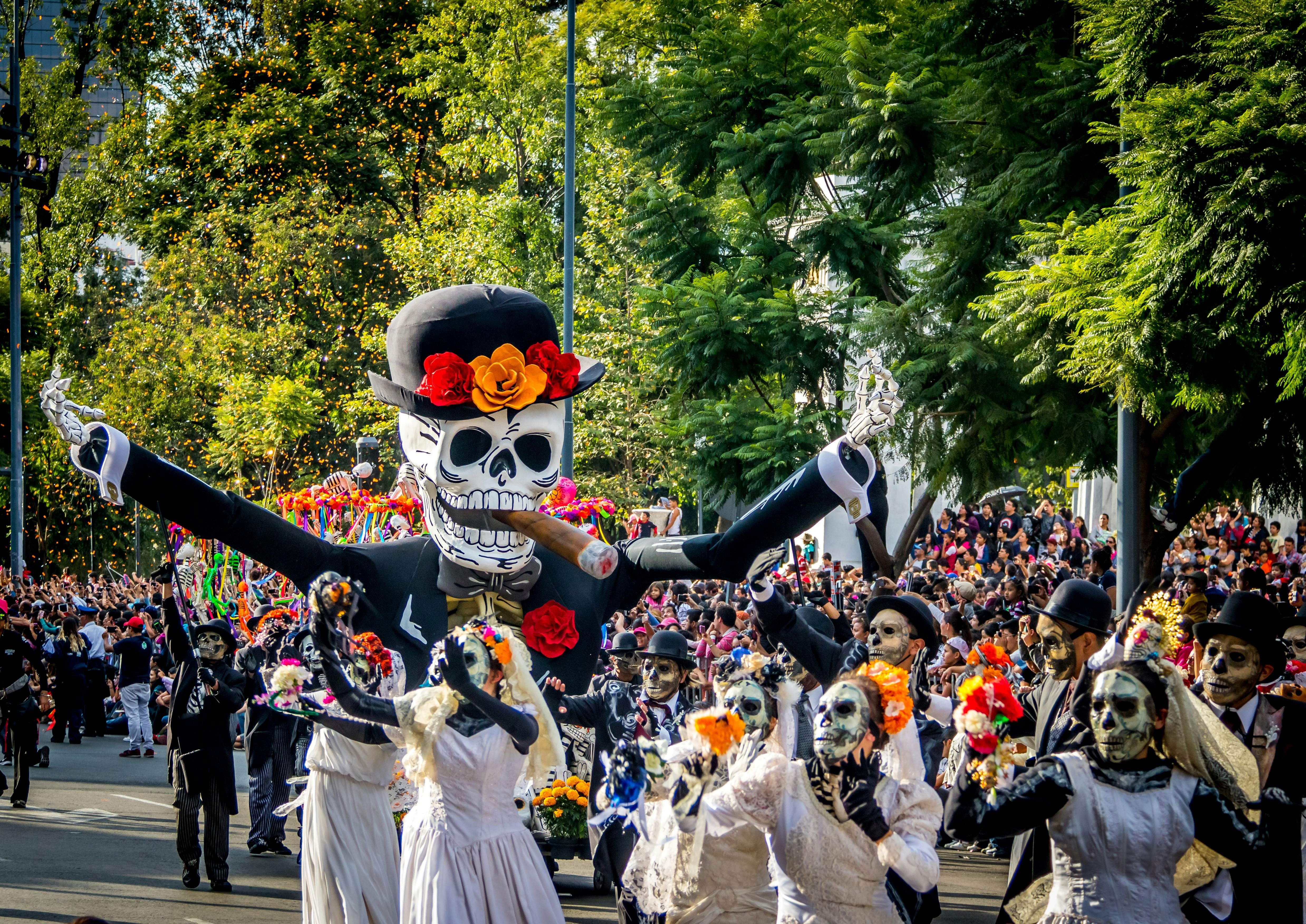Mexico City, a sprawling metropolis, captivates travelers throughout the year. With a vibrant culinary scene, diverse neighborhoods, and a wealth of cultural attractions, there’s always something to explore in this dynamic capital. Choosing the Best Time To Visit Mexico City depends on your priorities, whether you seek sunshine, cultural immersion, or budget-friendly travel. This guide breaks down Mexico City’s seasons to help you plan your perfect trip.
 People walk a sidewalk under jacaranda trees bursting with purple blossoms, next to a large domed building
People walk a sidewalk under jacaranda trees bursting with purple blossoms, next to a large domed building
Early spring in Mexico City brings stunning jacaranda blooms, painting the city in vibrant purple hues, making it an ideal time for sun-seekers and photographers.
Spring (March to May): Ideal Weather and Festive Atmosphere
Spring in Mexico City, from March to May, is often considered the best time to visit Mexico City for pleasant weather. Expect sunny days with average highs around 26°C (mid-70s°F), creating perfect conditions for exploring outdoor attractions. This season is popular, so booking accommodations and tours in advance is recommended.
The iconic jacaranda trees bloom from late February through March, transforming streets like Paseo de la Reforma into breathtaking purple landscapes. Music enthusiasts can enjoy the annual Vive Latino festival in March, a major rock music event.
Holy Week (Semana Santa), a significant Catholic observance, falls during this period. While religious participation in Mexico City has evolved, Semana Santa marks the start of a two-week holiday for many Mexicans. The city becomes quieter as residents head to beach destinations, resulting in lighter traffic. However, travel to and from Mexico City might be busier, so early flight and bus reservations are advisable.
May maintains the warm weather and hosts the Feria de las Culturas Amigas at the end of the month. This festival infuses the city with a global ambiance, celebrating diverse cultures through food, art, and music.
Summer (June to August) & Winter (December to February): Budget-Friendly Travel
For travelers seeking budget deals, the summer months (June to August) and winter months (December to February) can be the best time to visit Mexico City.
Summer coincides with Mexico City’s rainy season. While daytime temperatures remain warm, averaging around 26°C (79°F), afternoon showers are common. The upside is that fewer crowds and potential hotel discounts make it a more affordable time to travel. The rain also helps to clear the city’s air, and the season offers delicious seasonal fruits and vegetables like mangoes, especially in July. Cyclists can enjoy clear post-rain skies, particularly on Sundays when Paseo de la Reforma closes to car traffic.
Winter, spanning from December to February, is the driest and coolest period. December offers festive cheer with Las Posadas, traditional Christmas parties featuring piñatas and ponche. However, many restaurants and businesses may have reduced hours or closures from Christmas through New Year’s. This quieter period is excellent for a more relaxed visit, but checking the operating hours of specific venues is recommended. December 12 marks Día de la Virgen de Guadalupe, drawing pilgrims to the Basílica de Guadalupe.
 People in traditional costumes, many carrying banners, gather in a square in front of a giant modern church
People in traditional costumes, many carrying banners, gather in a square in front of a giant modern church
The annual pilgrimage for the Día de la Virgen de Guadalupe on December 12th sees countless devotees honoring Mexico’s patron saint at the Basilica de Guadalupe, one of the most significant religious events in Mexico City.
January is among the coldest months, with daytime highs around 20–22ºC (68–71ºF). Evenings can be chilly, requiring warm layers as central heating is not typical in Mexico City buildings. Bakeries feature rosca de reyes for Día de los Reyes (Three Kings’ Day on January 6). February is notable for art fairs like Zona Maco and Material Art Fair, attracting art enthusiasts.
Fall (September to November): Cultural Festivals and Celebrations
Fall, from September to November, is arguably the best time to visit Mexico City for experiencing Mexican culture and major events. While temperatures begin to cool, this season is packed with festivities.
September brings mild, yet still rainy weather, suggesting morning explorations to avoid afternoon showers. Mid-September is ideal for experiencing Mexican patriotism during Independence Day celebrations on September 16th.
October marks the beginning of the Day of the Dead (Día de los Muertos) season. Bakeries and shops sell calaveras (sugar skulls) and pan de muerto, and ofrendas appear throughout the city. Late October witnesses the Formula 1 Grand Prix, drawing an international audience.
 Day of the Dead festival celebrated with skull-shaped floats parading down a street
Day of the Dead festival celebrated with skull-shaped floats parading down a street
The Day of the Dead parade in Mexico City is a spectacular cultural event, showcasing elaborate floats and costumes, and is a major highlight for visitors experiencing Mexican traditions.
November culminates in the vibrant Day of the Dead celebrations. Mexico City comes alive with skeletal face paint, elaborate ofrendas, and bright marigolds, offering an unforgettable cultural experience.
Ultimately, the best time to visit Mexico City is subjective and depends on your preferences. Spring offers ideal weather, summer and winter provide budget opportunities, and fall is rich in cultural experiences. No matter when you choose to go, Mexico City promises an enriching and memorable journey.